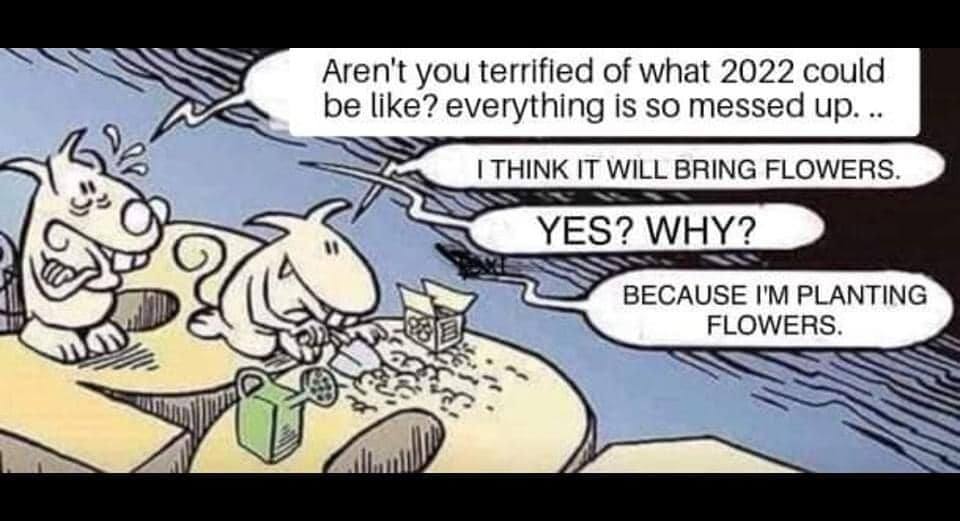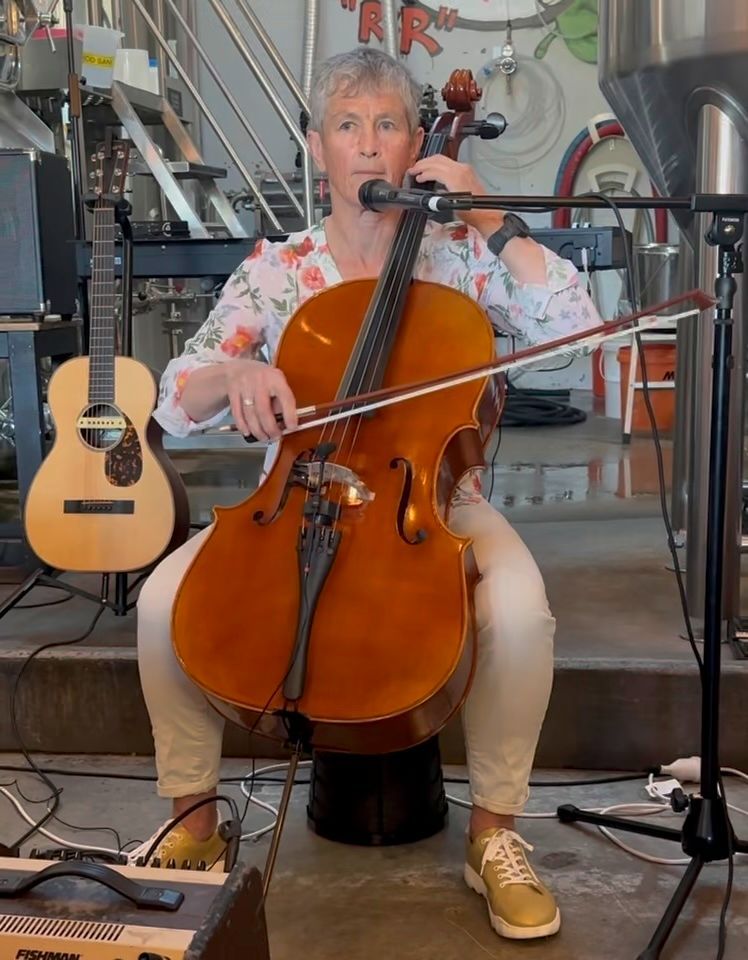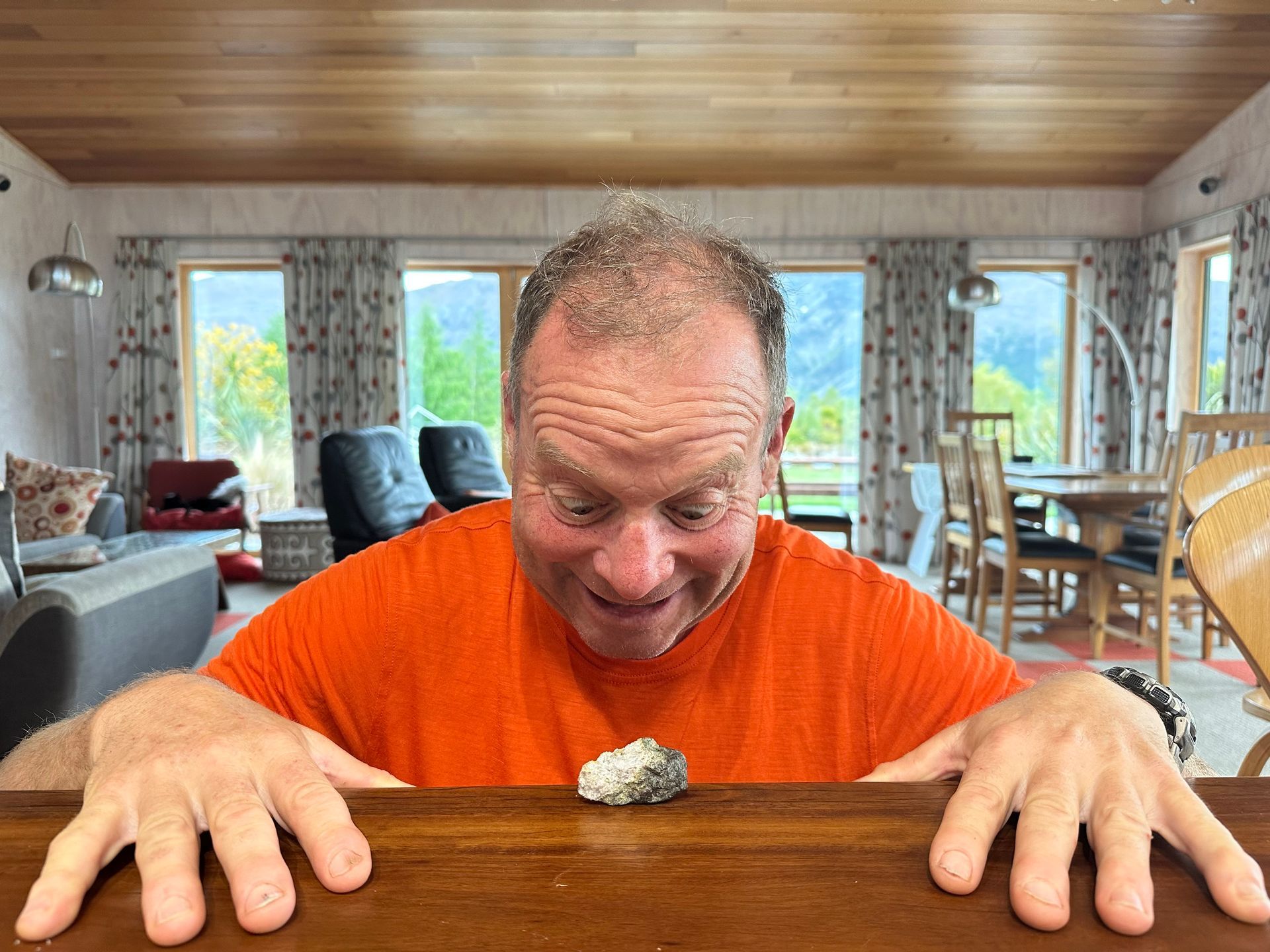Are we still not nearly there?
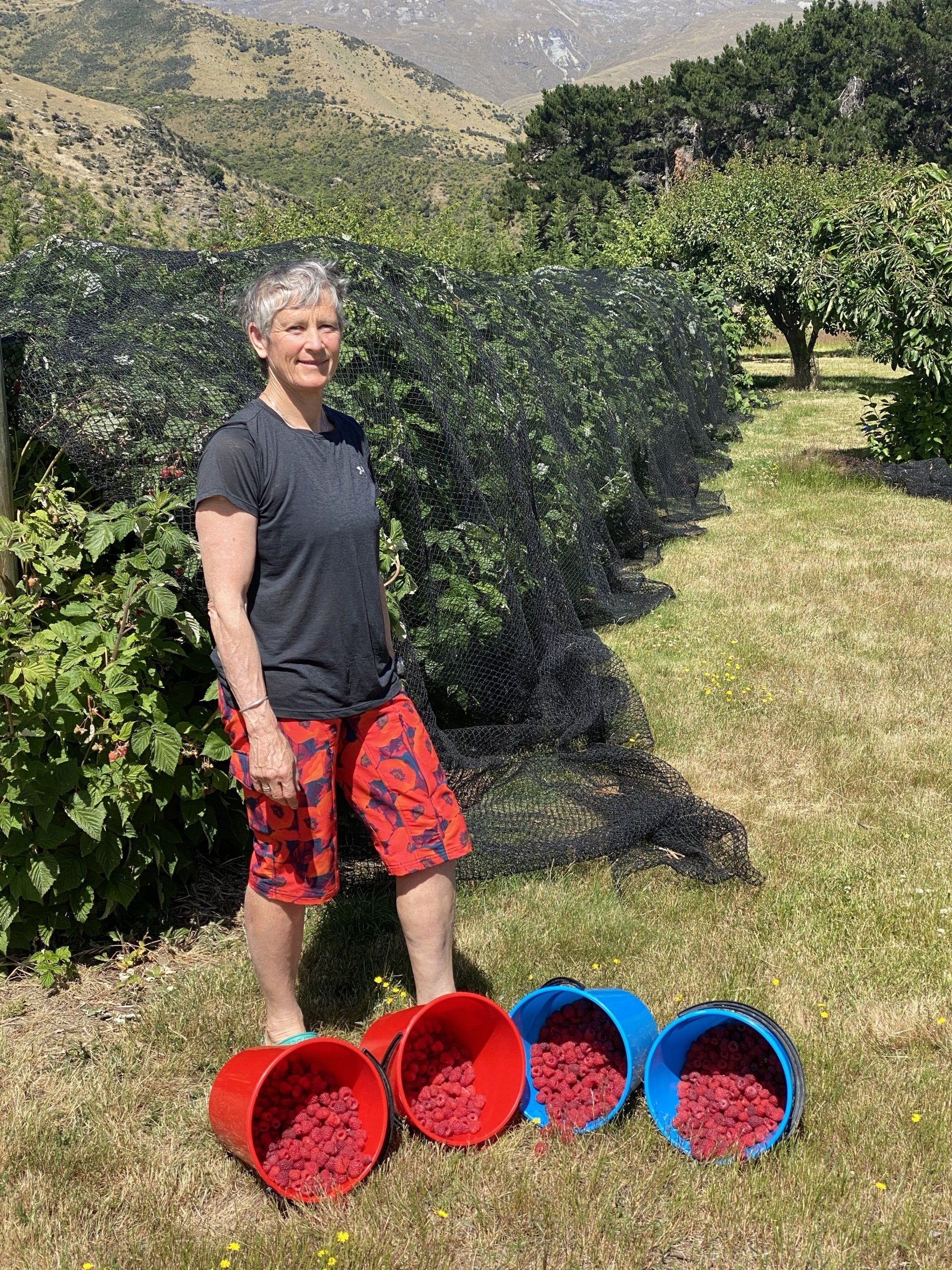
Over a year ago I wrote a post asking ‘ Are we nearly there yet? ‘. My conclusion at the time was that we were not nearly anywhere, in relation to COVID-19. I often want to ask whether we are nearly there yet when picking our row of raspberry canes, as it takes around 2 hours to pick the whole lot. It’s not Chris’s favourite thing but he generally comes and assists if I ask nicely, which takes it down to 1 hour each. One hour still feels like quite a lot of raspberry picking time when it needs doing every 2 to 3 days.
The ‘Are we nearly there yet?’ question about the COVID pandemic remains compromised by the lack of clarity as to where ‘there’ might be. When you are picking raspberries it is relatively easy – ‘there’ is when all the ripe raspberries have been picked off the vine and you are back to the beginning of the row. As for ‘there’ in terms of COVID, people refer to ‘getting back to normal’, although this sounds less convincing over time. The challenge of returning to pre-COVID times is ever more obvious, so our ‘there’ is migrating to being a time in which we don’t have to think about COVID on a constant basis.
Thinking about any problem a lot, whether it be earthquake damage or COVID, shifts from distressing to boring and tiring, even if it is a significant problem. Most people we know were simultaneously very keen for this holiday season as a break from their general life routines, as well as being a break from worrying about lockdowns, and remembering their mask and vaccine passports, and their proximity to other people who might have COVID, and vaccines, and anti-vaxxers, and the whole damn thing.
I am as prone to boredom with the whole COVID reality as the next person. I am also prone to thinking, can’t we just let Omicron in and finally have COVID-19 endemic? At least once it is endemic we won’t have to worry about when it will be endemic! When I hear about Omicron seeming much milder than other variants, letting it in seems like the sensible thing to do. But then I hear about a young person we know in Melbourne who is double vaccinated, but now has COVID and feels very ill indeed, and I think about the potential pressure on our hospital system, which all returns me to my rational self properly evaluating the options.
One of the problems with ‘just letting Omicron in’ is that Omicron isn’t the only COVID variant still around; relaxing border controls will mean letting whatever COVID is around to multiply faster than it is currently. Delta is still around, and it is still definitely making people sick, based on data from New South Wales, Australia. However, there seems to be general agreement that your chances of getting very sick with Omicron is around 1/7th to 1/10th the likelihood of getting very sick from Delta. It also seems like Omicron and Delta won’t continue to co-circulate as Omicron is so much better at infecting people (two to three times). So once Omicron is in your country, it will beat Delta into submission.
It also looks like getting infected by Omicron helps protect against catching Delta, and likely will increase people’s immunity to future COVID variants. So Omicron is not all bad news – the media headlines telling us how many tens or hundreds of thousands of cases daily in different countries don’t necessarily tell us whether there is a major problem or not. If there were tens of thousands of people in New Zealand with the common cold, we wouldn’t be very interested. A much more important parameter is numbers of hospitalisations and deaths. If we look at the United Kingdom as an example, the numbers of hospitalisations are now growing in the Omicron wave, but they are at a scale far far lower than in earlier waves of COVID – compare the peaks.
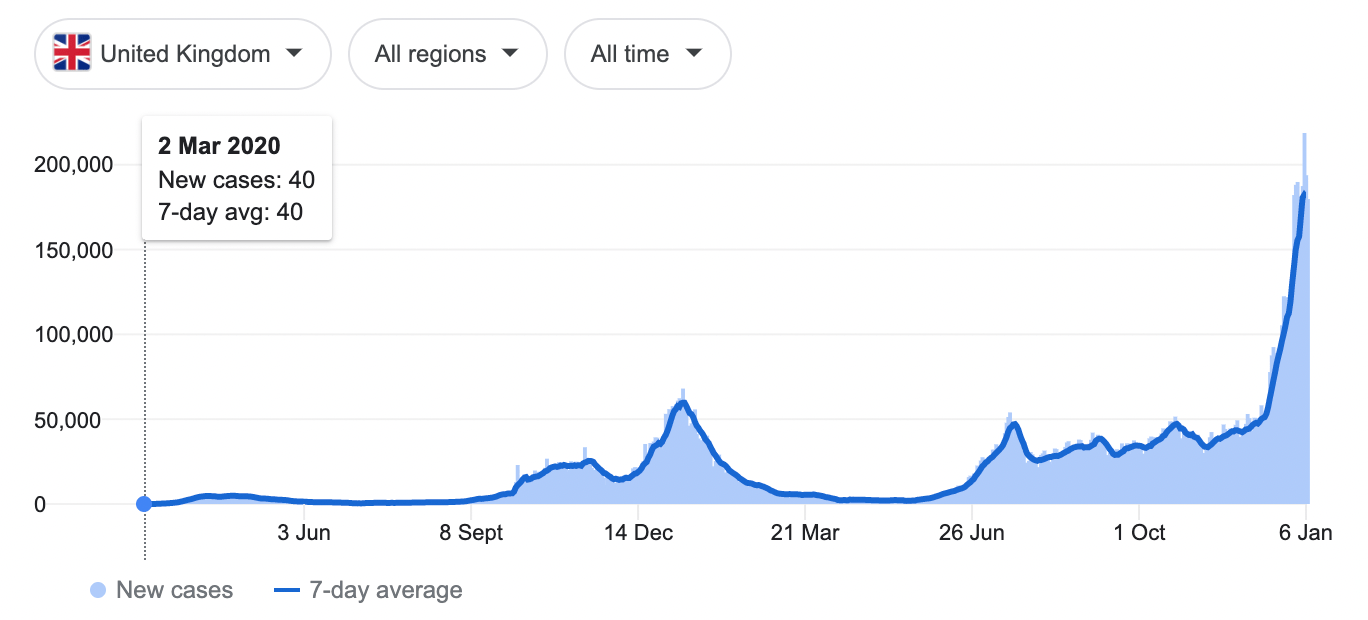
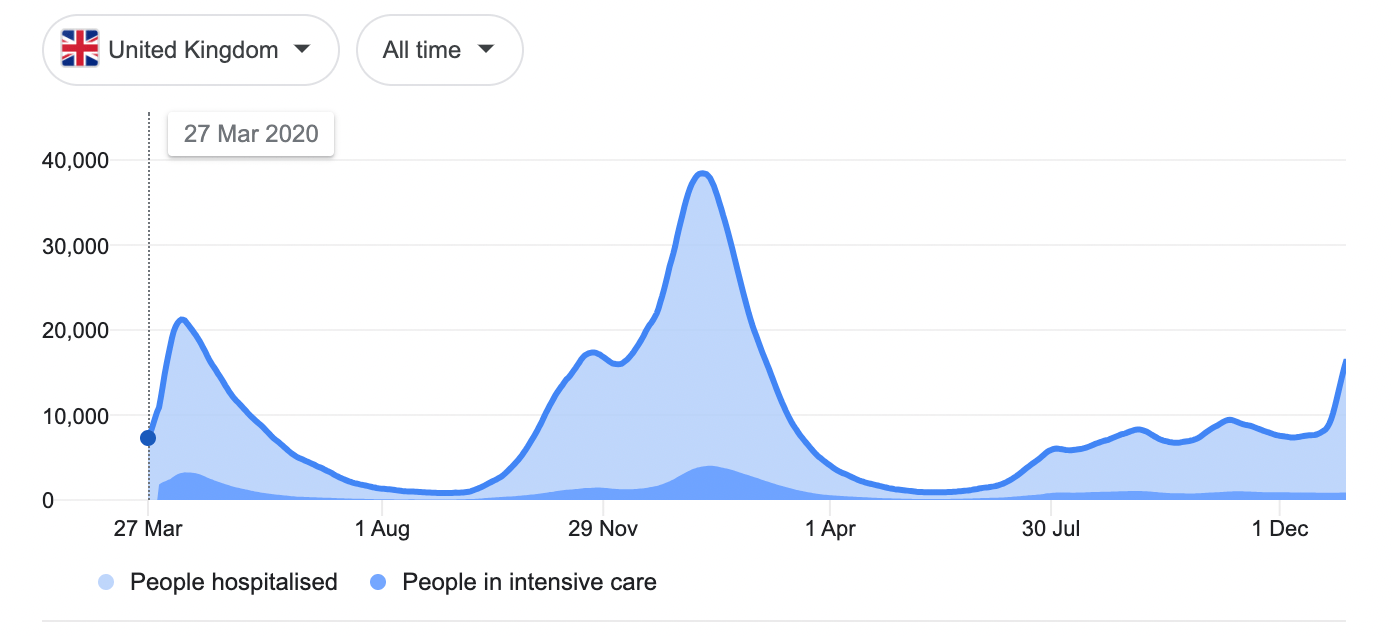
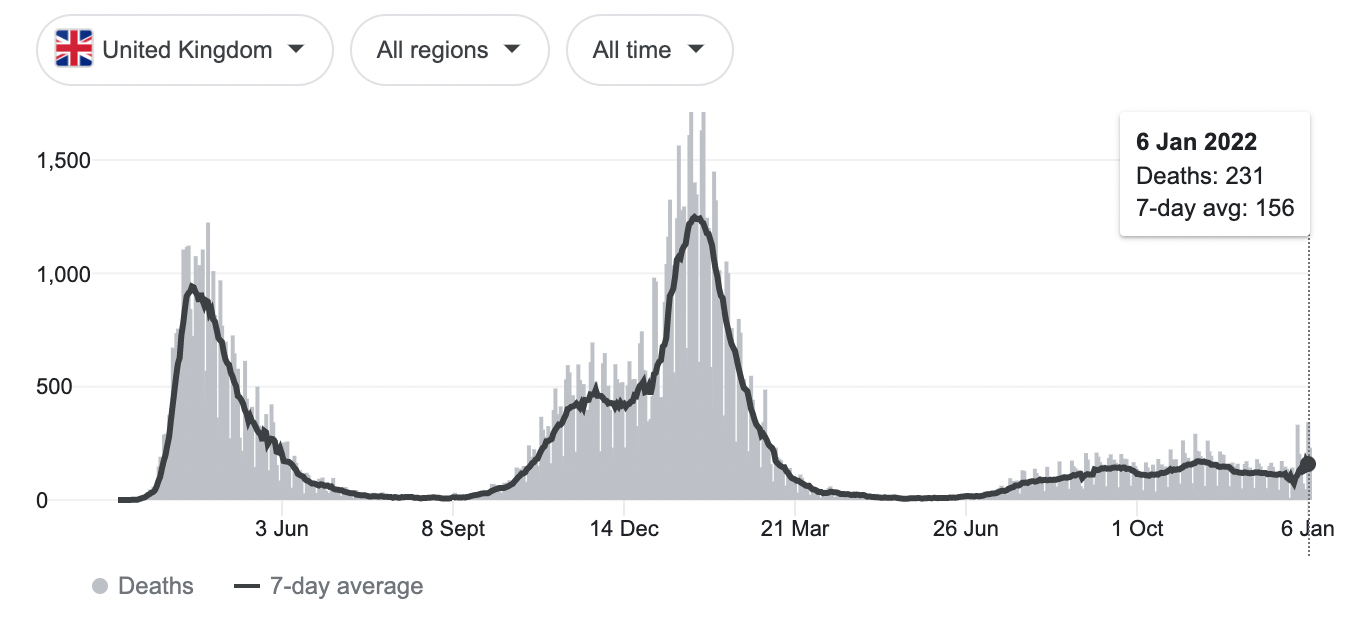
A common query at present in relation to the COVID pandemic ending is whether we can learn anything from past pandemics on this matter. The answer is both ‘yes’ and ‘no’:
- The world has never had as good travel linkages as it did at the time of COVID developing, allowing rapid worldwide spread of disease. This means COVID cannot be simply compared to historic pandemics where travel between countries for both people and diseases was slower and more sporadic.
- However, vaccines have been a major tool in eradicating smallpox and controlling polio pandemics through the 1900s – vaccines are essential in long term COVID management but there is a lack of conviction amongst epidemiologists that we can escape COVID by vaccination alone based on the number of new variants which, to some degree, evade prior immunity.
- It is suggested that viruses generally evolve to become less deadly (less ‘virulent’), thus ending pandemics like the 1918 flu pandemic. Unfortunately, this simply isn’t universally true. The 1918 flu may have become less virulent, or enough people may have got sick to reach herd immunity, there isn’t enough data to be able to know In contrast, dengue fever has become more virulent. Rabies has remained 100% virulent. Viruses mutate randomly – there is no necessary ‘direction’ for mutations and then evolutionary pressures will determine which are most successful. A virulent virus can be very successful, as long as it has propagated before harming or killing its host.
The UK government have set out three scenarios for ending of the pandemic. The UK government’s ‘there’ is considered to be when the virus no longer causes surges in hospital admissions or deaths, and restrictions on social interactions are no longer necessary in the UK. So what are their scenarios?
- Pandemic ends 2022-23
- Pandemic ends 2023-24 (most likely)
- Pandemic ends 2026 (least likely)
Looking at the UK graphs above, one can see that each COVID wave has had less relative impact in terms of hospitalisations and deaths, which we attribute due to increased levels of vaccination and improved ways of treating sick people, as well as increased immunity in the population through numbers of people who have already contracted the virus. The biggest question mark that will continue to remain is, whether new variants will arise which are sufficiently genetically different such that they can make large numbers of people very ill who have been vaccinated and/or who have had COVID. A lot of articles hedge around this point, because we genuinely don’t know.
In the final analysis, the end of the pandemic will be when countries ‘accept’ the numbers of sick people and deaths that are caused by COVID. We don’t say there is a flu pandemic every year in New Zealand because 500 people die (well, 500 people did die annually until COVID closed our borders, then no-one died of flu). We had accepted that 500 people die of flu and we didn’t all rush out every year and get vaccinated for it, because many of us didn’t feel a particular degree of urgency about flu. Around 1/3 of adults are classified as obese, and obesity leads to cancer, diabetes, ischaemic heart disease and cerebrovascular disease, as four of the leading causes of death in New Zealand. We don’t take drastic steps to control obesity that change our daily way of life and how our country operates. There is a level at which we accept these deaths, well above the level at which we accept COVID (which has so far caused 51 deaths, though would definitely have caused more without border controls and lockdowns).
I am not making a statement here about when acceptance of people dying from endemic might come, or what numbers of deaths we might or should accept. I am just saying there will be a level of impact from COVID we will come accept for a variety of reasons. These reasons will include being tired of being constrained by COVID. When that time of acceptance will come is well beyond the capability of me, or of any epidemiologist to pick. So if you want to know when the pandemic will end, it is probably best to ask a politician and gauge their answer based on the proximity of the next election.
Cynical? Not me!
